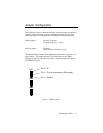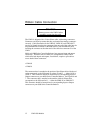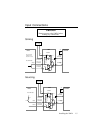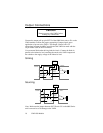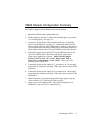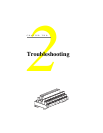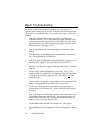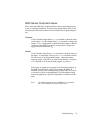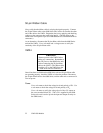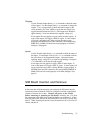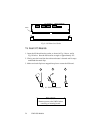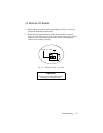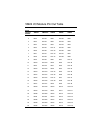
Troubleshooting 23
Outputs
Use the Transfer Output Status (TOUT) command to check the status
of the outputs. Use the Output State (OUT) command to change the
outputs. Use a voltage meter to check individual outputs at the
screw terminals (J4) of the VM24 to verify that the voltage level
toggles between Ground and (V
o
-2). [The output level should be
approximately 2 volts less than the user supplied voltage V
o
.]
If one output does not appear to toggle, check all other outputs. If
none of the outputs will toggle, check V
o
again. If some outputs
will toggle, and some won't (after verifying that they toggle
properly at the 6000 Series unit I/O connector), the corresponding
SIM8-OUT or SIM8-4X4 board isn't seated properly or has been
damaged. (See page 9.)
Inputs
Use the Transfer Input Status (TIN) command to check the status of
the inputs. Use the Input Active Level (INLVL) command to define
the active state of all programmable inputs. Alternate between
applying supply voltage V
i
to an input and grounding it, using the
TIN command to verify that the input toggles.
If one input does not appear to toggle, check all other inputs. If
none of the inputs will toggle, check V
i
again. If some inputs will
toggle, and some won't (after verifying that they toggle properly at
the 6000 Series unit I/O connector), the corresponding SIM8-IN or
SIM8-4X4 board isn't seated properly or has been damaged. (See
page 9.)
SIM Board Insertion and Removal
In the event that an I/O board needs to be replaced, the I/O boards must be
inserted and removed from the VM24 in a particular order due to the limited
clearance between the sockets. Remove all power to the VM24
before removing or inserting an I/O board, including the +5V from
the connection to the 6000 Series Controller/Indexer at connector J4. When
removing I/O boards, remove the board from the J1 slot first, J2 second, and
then J3. When inserting I/O boards, insert the board into the J3 slot first, J2
second, and then J1.



